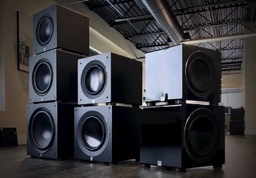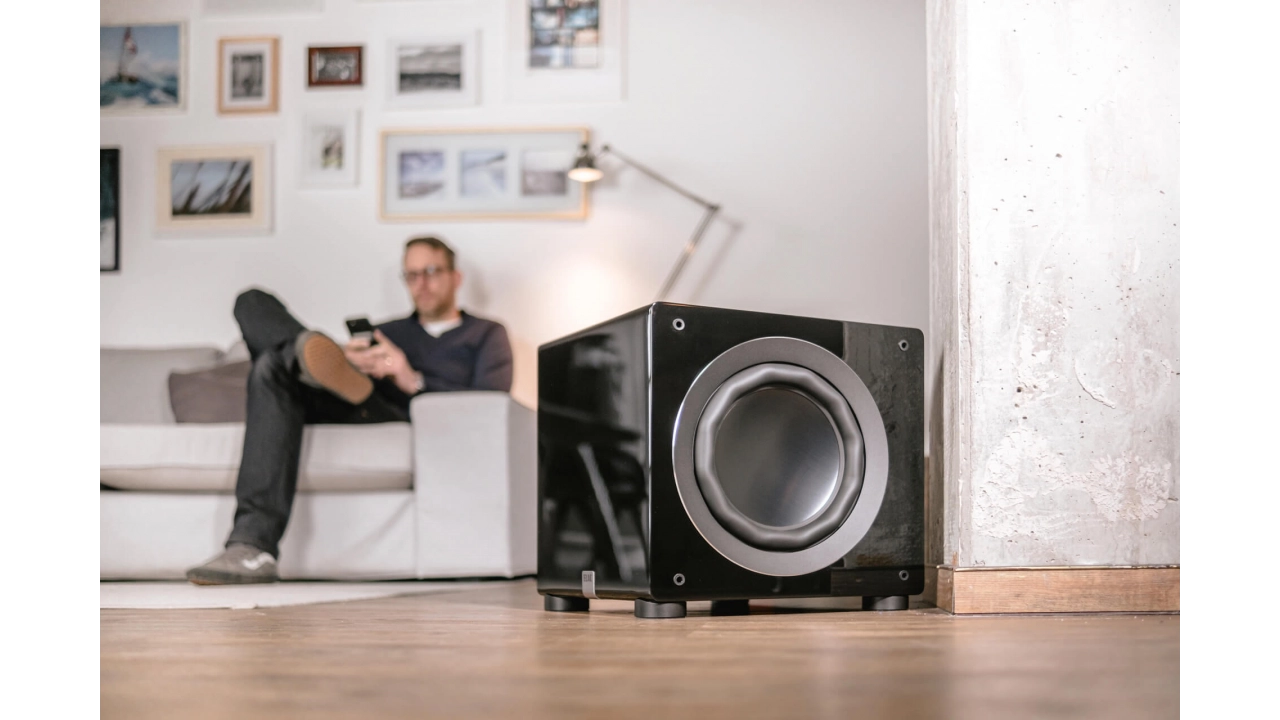What Is a Subwoofer?
When building a home theater or speaker sound system, it often begins with just a pair of speakers. This setup works well if you’re just starting since you can get a good sound range. However, as you delve deeper into the listening experience, you’ll notice that something is missing – the low bass sound that you don’t just hear, but also feel.
This is where a subwoofer completes the entire sound spectrum you were looking for. Most home theater setups will benefit when a subwoofer is added. You begin to get the heart-pounding oomph sound, which elevates the sound quality of music, games, and movies.
For this reason, ELAC Americas produces some of the best subwoofer systems to enhance your listening experience. In this guide, we’ll answer a few essential questions:
- What is a subwoofer?
- What does a subwoofer do?
- How do subwoofers work?
- Where should I place my subwoofer?
- Passive and active subwoofers
- How to set up your subwoofers?
The argument is still ongoing whether a subwoofer is necessary or not. You’ll learn the answer to this question, the function of this type of speaker, and the other essential details in the discussion below.
What is a Subwoofer?
A subwoofer is classified as a loudspeaker designed for low-frequency sound reproduction. In comparison, all full-range speakers can cover a lot of frequency range up to 20kHz, so most people begin building their systems using them. However, full-range speaker systems can’t produce low frequencies, which is where a subwoofer comes into play.
Subwoofer speakers can cover a wide range of bass frequencies from 20 to 200 Hz, which complements the capacities of the other speakers in a speaker system. You can rely on them to do the heavy lifting to hit those low registers. During sound production, subwoofers can make bass guitars and drums sound clearer. Further, movie sound effects and other bigger instruments sound fuller.
What Does a Subwoofer Do?
 A subwoofer works likea loudspeaker, except that it is optimized for producing low-frequency sounds. Its drivers, also known aswoofers, come in sizes from eight to 16 inches in diameter, typically larger than the ones you can find in other speaker types.
A subwoofer works likea loudspeaker, except that it is optimized for producing low-frequency sounds. Its drivers, also known aswoofers, come in sizes from eight to 16 inches in diameter, typically larger than the ones you can find in other speaker types.
These speakers are housed in a cabinet or enclosure made from various non-resonant materials such as plywood and medium-density fiberboard. The combination of the enclosure and the size of the driver creates the sound system, reproducing the familiar bass sounds.
How Do Subwoofers Work?
This driver is substantially bigger than regular speakers, allowing it to move air more effectively. When thesubwooferreceives an electrical signal containing low-frequency audio information, its driver rapidly moves back and forth, creating pressure waves in the surrounding air within the cabinet.
These pressure waves, combined with the acoustic properties of the non-resonant materials, result in deep, booming bass notes that you can both hear and feel. When you combine the unique low tones from your subwoofer with sounds from the other speakers, you get an overall richness and depth in your audio.
An acoustic suspension is created when you seal the cabinet around the driver. An air cushion is made inside, which functions like a spring that can be pushed and pulled by the speaker’s diaphragm. This setup produces excellent phase linearity and relatively low distortion. However, to create this desired low-tone effect, you need to have a large enclosure, which is why many subwoofers come with large cabinets.
In addition, to understand what a subwoofer does, one must look into the mechanics of a bass reflex system. With this design, many subwoofer models have their enclosures ported with a tube. This port is designed to create an acoustic resonance, optimizing it to produce the best low-end response in relation to the size of the enclosure.
With a bass reflex system, a subwoofer can extend its usable bass response, allowing it to reach lower frequencies. The only downside to this design is that the bass tones roll off faster, so you don’t get that lingering bass feel when you listen to music.
Passive and Active Subwoofers
After understanding what a subwoofer is, you may come across various types and designs of this speaker. As you shop for one, you may come across active and passive subwoofer systems and wonder what’s the difference between these two systems.
The main difference between a passive and an active subwoofer lies in their internal components and how the speakers are powered. Here are a few key points you should be aware of:
Active Subwoofers
- Active subwoofers are also known as powered subwoofers.
- They have a built-in amplifier.
- These self-powered systems only require connecting a sound source and a power outlet.
- They are easier to set up and are a popular choice for home audio systems due to their convenience.
Passive Subwoofer
- These subwoofers don’t have a built-in amplifier.
- They rely on an external amp to drive the speaker.
- You need an amplifier and a crossover to the passive subwoofer to set things up.
- These speakers are best suited for people who want to customize their sound system setup.
If you’re looking for a straightforward way to connect your sub to your system, it is best to go for an active subwoofer. However, a passive subwoofer is your best option if you want more flexibility and precise control.
Where Should I Place My Subwoofer?
When discussing subwoofer placement, it is essential to point out that there is no way to localize sounds when they hit below 100 Hz since they can’t provide directional information. You can place your subwoofers anywhere if the bass sounds do not draw too much attention. However, if your subwoofer is set higher than 100 Hz, it is best to position your sub between the two main speakers.
How to Set Up Your Subwoofers?
There are several ways to connect your sub to an existing audio system. You can connect an audio interconnect cable directly from the system output to the subwoofer’s line input. If your system doesn’t have a dedicated sub-out, you can connect your sub to the receiver or preamp, so you will have to rely on your subwoofer for mono summing and low-pass filtering.
Some soundbars allow wireless connections. Please refer to the manufacturer’s instructions on wirelessly connecting your sub.
Another situation is where your system doesn’t have an available line-level output. In this case, you need a subwoofer with high-level inputs, usually four binding posts or clamps. You can then use speaker wires to connect your amplifier’s left and right outputs to the subwoofer, allowing you to run the cables to the main speakers.
Choose Cutting Edge Subwoofers from ELAC
ELAC Americas provides some of the best-in-class subwoofer systems in the market today. If you’re looking for that distinct low-tone bass for your setup, check out our collection of the best subwoofers for your home theater. You can contact our specialists anytime to know the best option for your setup.

